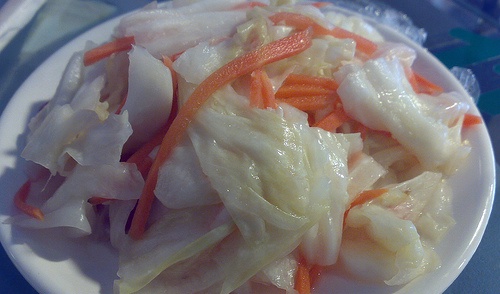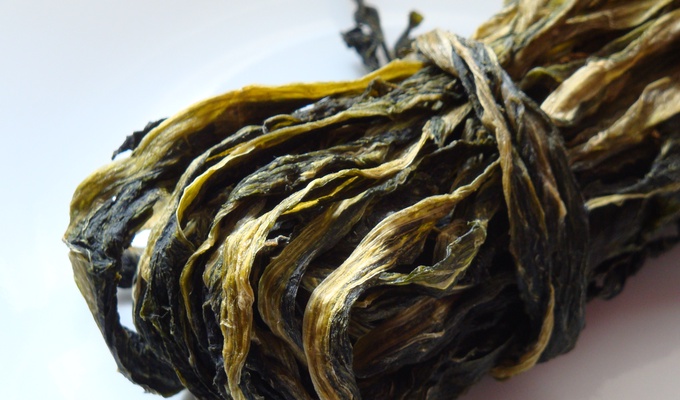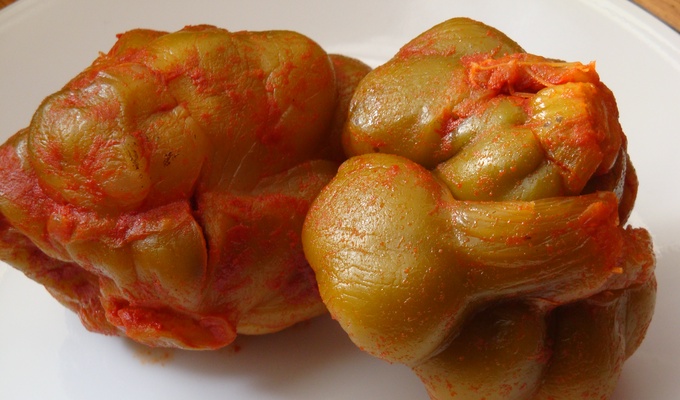Pao cai, also romanization as Pao tsai, also known as Pào cài, Chinese sauerkraut, or pickled cabbage, refers to fermented vegetables in Chinese, which typically use different vegetables as raw materials. The different vegetables are then fermented in an anaerobic jar which contains a special pao cai brine. To improve the flavours and create antibacterial effects, garlic, ginger, chilli, onion and cloves can be added during the process of pickle fermentation. In Chinese, pao cai is particularly found in Szechuan cuisine. It is most commonly found in northern and western China; however, there is also a unique form of pao cai, called suan cai, which is prominent in Northeastern China. It is eaten with rice, often with congee during breakfast. There exists more than 11 types of pao cai in China.
Similar fermented vegetables can be found all over the world with various favors, and they are also referred to as pao cai in Chinese, such as the Sichuanese zha cai, Central American curtido, French cornichons, and the German sauerkraut.


